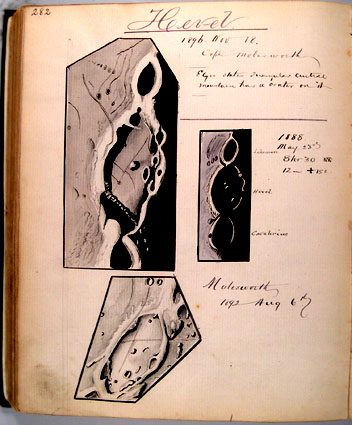Difference between revisions of "September 1, 2004"
| Line 11: | Line 11: | ||
<table width="80%" border="0" align="center" cellpadding="8"> | <table width="80%" border="0" align="center" cellpadding="8"> | ||
<tr> | <tr> | ||
| − | <td><div align="center" class="main_sm" | + | <td><div align="center" class="main_sm">Image Credit: [mailto:tychocrater@yahoo.com Chuck Wood ]</div></td> |
</tr> | </tr> | ||
</table> | </table> | ||
Revision as of 20:32, 19 January 2015
Hundred Year Old Hevelius
Image Credit: Chuck Wood |
|
Hundred Year Old Hevel With our multi-hundred dollar eyepieces, goto telescopes, electronic cameras and clever software we see and record the Moon better than ever before. Oh yeah? Compare the top left drawing of Hevel (the name before latinization gentrified it to Hevelius), made in 1896 by one Capt. Molesworth, with your own observations. Have you seen the crossing rilles on the crater floor? The very best telescopic image ever of Hevelius confirms the Capt's discovery and does show some additional rilles. We should not ignore the work of old time observers. Some had excellent telescopes, sharp eyes and good drafting skills. What we do have now that they didn't is a good understanding of the geologic processes that made the lunar landscapes we study. Today's LPOD is another page from the 1890s lunar diary of Walter Goodacre.
Related Links: Tomorrow's LPOD: Ray-Swept Stofler
|
Author & Editor: Technical Consultant: Contacte al Traductor: A service of: |
COMMENTS?
Register, and click on the Discussion tab at the top of the page.




